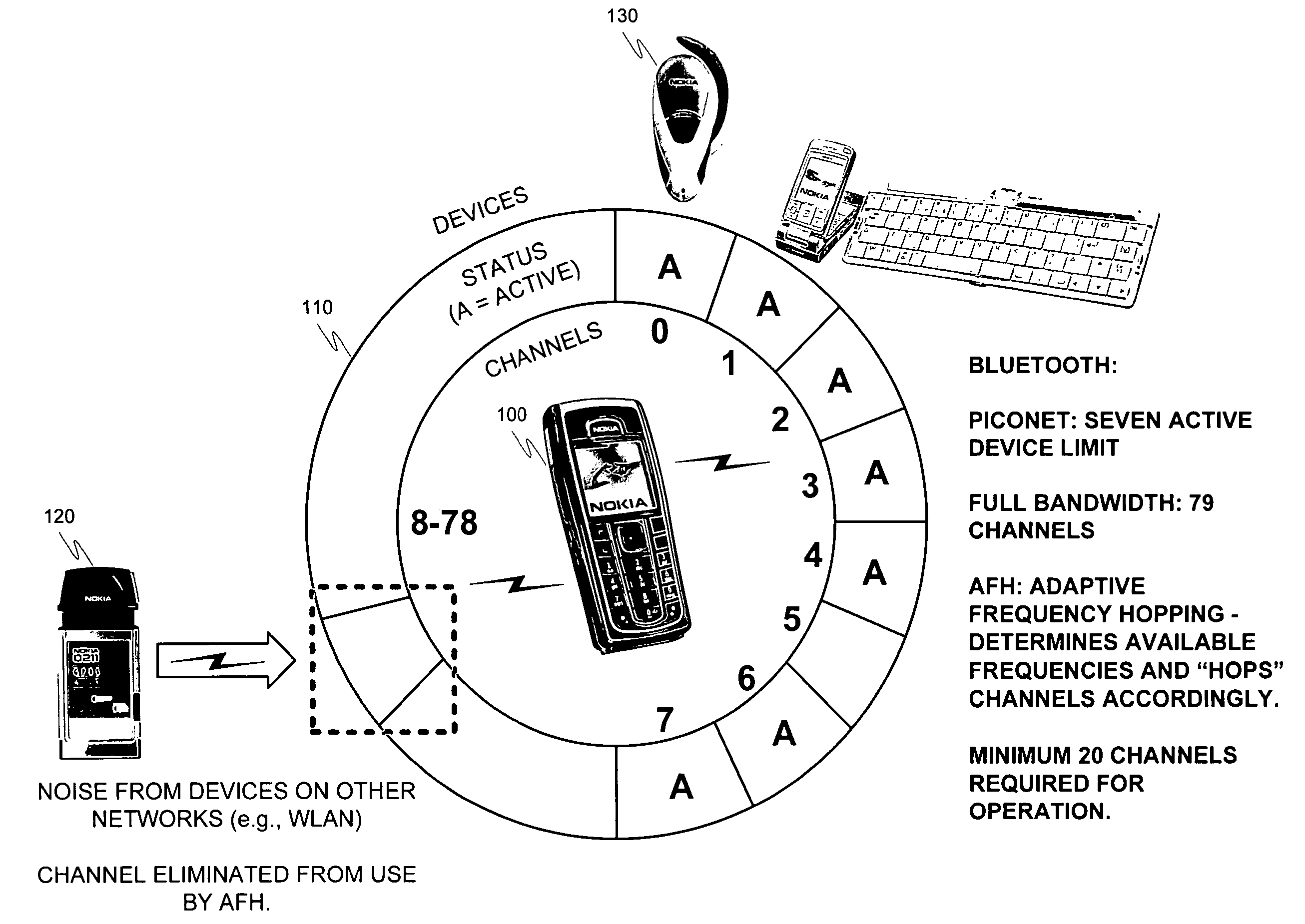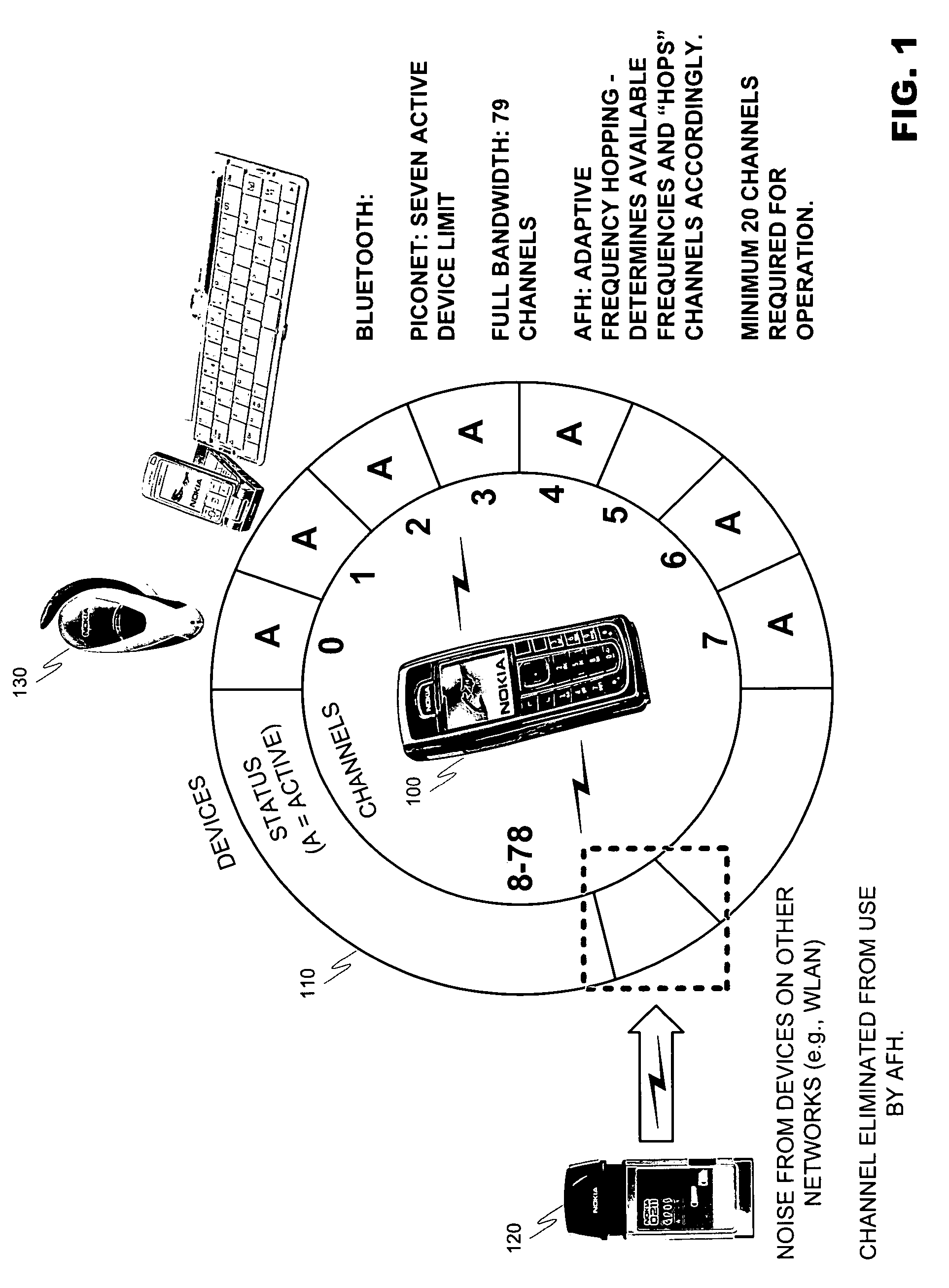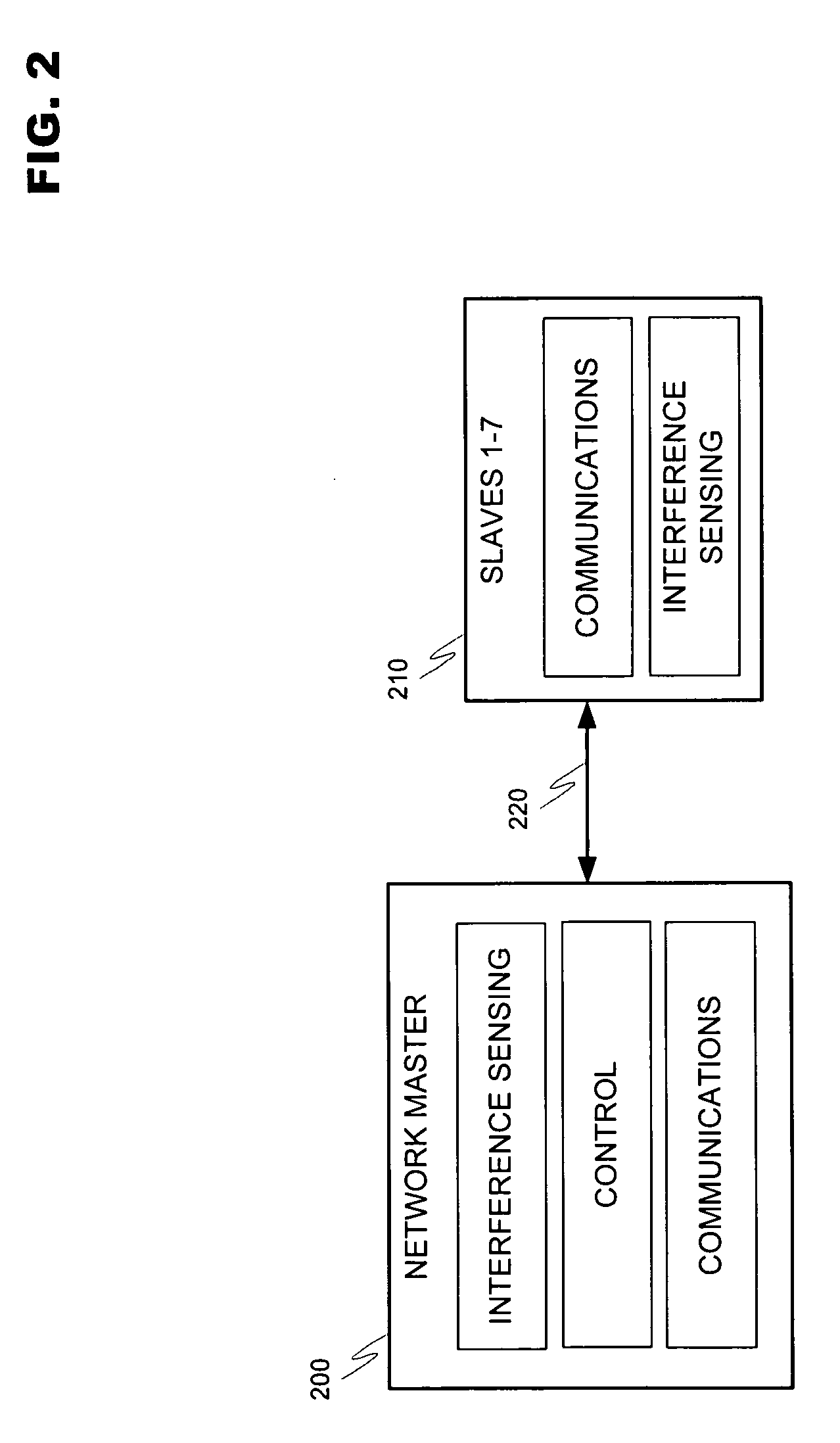Decreasing mutual interference between multiple bluetooth piconets by controlling the channel usage with the help of the adaptive frequency hopping methods
a technology of adaptive frequency hopping and control channel, applied in the direction of radio transmission, electrical equipment, network topologies, etc., can solve the problems of reducing the range affecting the performance affecting the reliability of wireless communication modules, so as to reduce the interference between closely-situated wireless communication modules and prevent conflict
- Summary
- Abstract
- Description
- Claims
- Application Information
AI Technical Summary
Benefits of technology
Problems solved by technology
Method used
Image
Examples
Embodiment Construction
[0028] While the invention has been described in preferred embodiments, various changes can be made therein without departing from the spirit and scope of the invention, as described in the appended claims.
I. Operational Environment for a Basic Wireless Network
[0029]FIG. 1 depicts a short-range communication operating environment. A Bluetooth™ network is used for the sake of example, however, the invention may be applied to any short-range network implemented in a similar manner or usable for a similar application. FIG. 1. further shows an exemplary WCD 100 communicating with Bluetooth™ slave device 130. A Bluetooth™ slave device may be, but is not limited to, an input device (such as the headset or keyboard shown in the figure), an output device, a calculation device, a data storage device, etc.
[0030] The full Bluetooth™ communication bandwidth is divided into 79 channels displaced by 1 MHz starting at 2.402 MHz and ending at 2.480 MHz. Bluetooth™ uses spread spectrum frequency...
PUM
 Login to View More
Login to View More Abstract
Description
Claims
Application Information
 Login to View More
Login to View More - R&D
- Intellectual Property
- Life Sciences
- Materials
- Tech Scout
- Unparalleled Data Quality
- Higher Quality Content
- 60% Fewer Hallucinations
Browse by: Latest US Patents, China's latest patents, Technical Efficacy Thesaurus, Application Domain, Technology Topic, Popular Technical Reports.
© 2025 PatSnap. All rights reserved.Legal|Privacy policy|Modern Slavery Act Transparency Statement|Sitemap|About US| Contact US: help@patsnap.com



